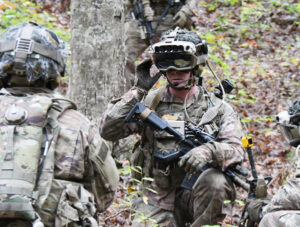The Pentagon’s top weapons tester said the Army must still address challenges with its new Integrated Visual Augmentation System (IVAS) headset to ensure its “operational effectiveness, suitability and survivability in combat” before initial fielding this year.
The Director of Operational, Test and Evaluation (DOT&E) latest annual report specifically calls on the Army to develop a firm testing and engineering strategy to quantify improvements made to the latest version of the Microsoft [MSFT]-built IVAS headset before moving into the program’s operational evaluation.

“The IVAS Program Manager has not yet developed an adequate T&E strategy that quantifies improvements to [Capability Set 4] deficiencies, a prerequisite for [Initial Operational Test & Evaluation] and fielding,” officials wrote in the DOT&E report.
DOT&E’s push to address lingering IVAS fixes arrives as the Army decided this past October to delay the operational evaluation to this May and move the first unit equipped date to September (Defense Daily, Oct. 14).
Karen Saunders, the Army’s acting top acquisition official, and Gen. Mike Murray, the head of Army Futures Command, have since released a joint statement acknowledging an issue with the system’s waveguide technology that was causing resolution issues.
Additional details on IVAS’ operational effectiveness and suitability were not made available in the public version of the DOT&E report and were instead only included in the Controlled Unclassified Information edition.
DOT&E, however, also recommended the Army continue mitigating previously identified deficiencies with IVAS, work with Microsoft on developing a reliability growth plan to continue to correct failure modes and complete a battery and power management plan “to determine how soldiers will charge batteries to ensure adequate power to complete a 72-hour mission scenario.”
Last March, the Army awarded Microsoft a deal worth up to $21.9 billion over the next 10 years to move the IVAS program from rapid prototyping into production (Defense Daily, March 31).
This past fall, the Pentagon’s inspector general announced plans to conduct an audit of the IVAS program “to determine whether Army officials are producing and fielding Integrated Visual Augmentation System units that meet capability requirements and user needs” (Defense Daily, Oct. 19).